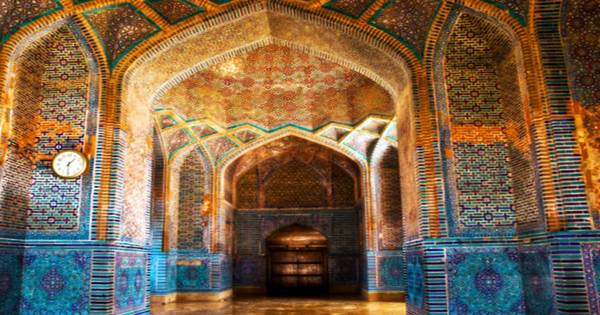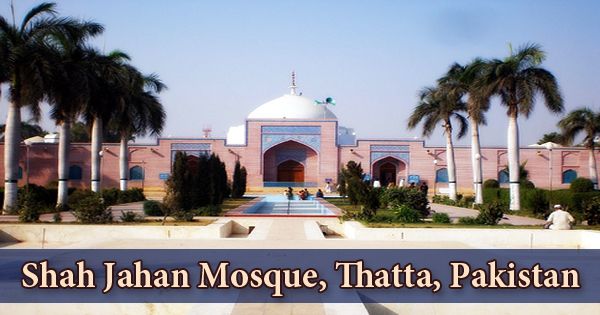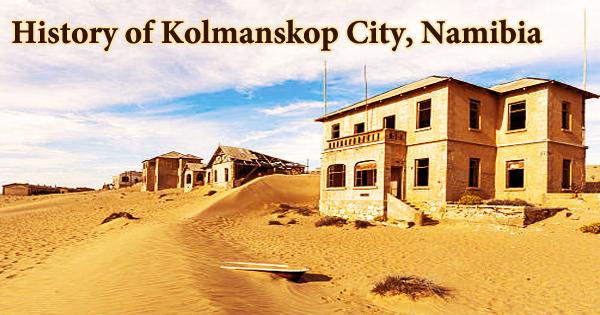The Shah Jahan Mosque (Urdu: شاہ جہاں مسجد), also known as the Jamia Masjid of Thatta, is a building from the 17th century that serves as the central mosque for Thatta town, in the Sindh province of Pakistan. Since 1993, it has been on the tentative UNESCO World Heritage list. During the reign of Mughal Emperor Shah Jahan, the mosque was built and given to the city as a token of gratitude. The mosque is considered to have the most elaborate display of tile work in South Asia, and a decorative feature that is uncommon for Mughal-period mosques is also important for its geometric brickwork. The Shah Jahan Mosque was built as a gift to the people of Sindh by the eponymous Emperor. It is constructed mainly of heavy brick and is laid out with a wide (52 × 30 meters) courtyard at its center in the normal quadrilateral arrangement. With 93 domes of varying scale, the arcades around the courtyard are covered. One impressive acoustical aspect is that it is possible to clearly hear the prayers of someone speaking loudly in front of the mihrab (the prayer niche facing Mecca) in the building.
The mosque was constructed during the reign of the Mughal emperor Shah Jahan, who gave it to the city as a token of gratitude, and is strongly influenced by the architecture of Central Asia, a reflection of the campaigns of Shah Jahan near Samarkand shortly before the mosque was planned. The mosque is situated in eastern Thatta, in the 16th and 17th centuries, the capital of Sindh, before the capital of Sindh was transferred to nearby Hyderabad. It is situated next to the UNESCO World Heritage Site, the Makli Necropolis. The site is situated about 100 kilometers from Karachi.

Intricate floral designs of Shah Jahan Mosque
Thatta is an ancient city with a history that is as vast as it is rich. As the medieval capital of the Sindh province of Pakistan, over its long history, Thatta has come to know several different rulers. All of these different rulers and their respective cultures have left their effect on this diverse region, but maybe no one has left an influence on the city more than the Mughal Emperor Shah Jahan of the 17th century. After his rebellion against his father, Shah Jahan sought refuge in Thatta from his father, Emperor Jahangir. Shah Jahan was pleased by the hospitality he received from the Sindhi people and, as a gesture of gratitude, ordered the building of the mosque. The building of the mosque may also have been partly motivated by a desire to help mitigate the effects of a destructive storm that hit the city in 1637 and almost destroyed Thatta.
Since its central components were completed sometime between 1644 and 1647, the majestic building served as the main mosque of the town. It should be remembered, however, that the building was not formally consecrated until 1647, and the eastern complex of the building was not completed until 1659, during the reign of the Mughal emperor Aurangzeb. The architectural style of the Shah Jahan Mosque is overtly inspired by Turkic and Persian styles. The mosque is distinguished by extensive brickwork and the use of blue tiles, both of which were directly affected by Central Asian Timurid architectural styles from where the former Sindh rulers, the Tarkhans, had hailed before the Mughals annexed the area in 1592.

A panoramic view of the mosque’s courtyard, showing three of the mosque’s four iwans
A 169’×97′ courtyard centers around the mosque, a heavy brick building of simple construction constructed on a stone plinth, with heavy square pillars and massive walls. The chamber of prayer is close in size. Big domes cover both of them. The Mihrab of the mosque was originally wrongly identified with Mecca. It is said that the Sufi mystic, Makhdum Nooh, who is buried in the nearby city of Hala, was approached by the architects of the mosque in order to correct its alignment. Popular tradition holds that Makhdum Nooh then, through the force of his prayer, corrected the mistake overnight, thus guaranteeing his status as a saint. Historical records indicate that the Mihrab of the mosque was only restored a century after the building of the mosque.
The mosque is famous for its beautiful architecture, possibly imported from another Sindh town of Hala, with red bricks and blue glazed tiles. The mosque has a total of 100 domes and is the largest mosque in the world with such a large number of domes. It was built with acoustics in mind. At the other end, a person speaking within one end of the dome can be heard. Since 1993, it has been on the tentative UNESCO World Heritage list. The alignment of the mihrab is said to have been fixed overnight after the Sufi mystic prayed to God to repair the mishap, after which he became a respected Islamic saint. Of course, though it is more fun to believe in this myth, documents exist that indicate that a century after the mosque was originally built, the mihrab was restored and properly aligned.
Two aisled galleries open to the courtyard through arcades to the north and south. Ninety-three domes cover the entire structure, and are probably the source of a remarkable echo that allows every part of the building to hear the prayers in front of the Mibrab. It was not until 1658-59 that the building’s eastern portion and the gateway were finished. Subsequent repairs were conducted in 1692 under Emperor Alamgir and in 1812 under the auspices of Murad Ali Khan Talpur, a local chieftain. During the British era, further renovations took place in 1855 and in 1894. More recently, during the 1960s and 70s, the mosque was rebuilt.

The mosque’s arched prayers area
The tiles of the mosque reflect a direct influence of the style of Timurid. Cobalt blue, turquoise, manganese violet, and white tiles are used in the mosque. In the Indo-Pakistan sub-continent, the mosque features the most intricate display of tile-work. The two principal chambers, in particular, are absolutely filled by them. The dome of the mosque is decorated with elegant blue and white tile-work designed to represent the heavens in stellar patterns. Its walls, signed by Abdul Ghafur and Abdul Sheikh, feature calligraphic tile work. Stylish floral patterns decorate the spandrels of the main arches, comparable to Iran’s Kashi work of the seventeenth century, and geometrical designs on square tiles are disposed of in a sequence of panels elsewhere.
The architecture of the mosque is what makes this site so special, as well as a must-see on anyone’s trip to Pakistan’s Sindh region. The building is a blend of styles from the Central Asian influences of Turkish, Persian, and Timurid. The building is very unique in that it is one of the few mosques with almost no minarets present. The architecture of the mosque may have been inspired in Kachhpura, near the city of Agra, in modern-day India, by the conservative Timurid-style Humayun Mosque. A Persian-style Charbagh, or quadrangle garden, is the primary entryway into the mosque complex. To the west of its central courtyard, which features iwans, or doors, in each of its four cardinal directions, is the main prayer space. Rectangular in shape, the courtyard measures 169 feet by 97 feet. It is surrounded by aisled galleries, with 33 arches surrounding it. The mosque does, however, boast 93 domes, more than any other building in all of Pakistan.
To represent the celestial atmosphere of the sky, the inside of the main dome is painted with stellar patterns of blue, white, red, and yellow tiles. The main dome’s walls are also littered with exquisite Arabic calligraphy. Prayers in the entire building can be heard in the main prayer space. Emperor Aurangzeb in 1692, as well as Murad Ali Khan Talpur in 1812, carried out restoration works. The mosque has been on the UNESCO tentative list of World Heritage Sites since 1993, but official recognition has not yet been achieved.
Information Sources:
















